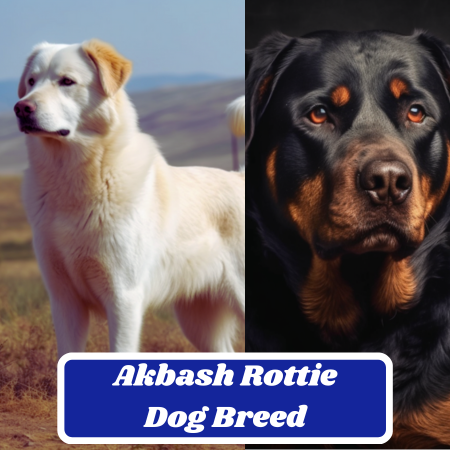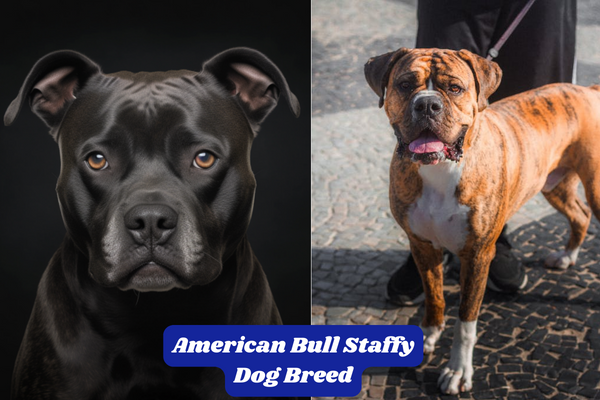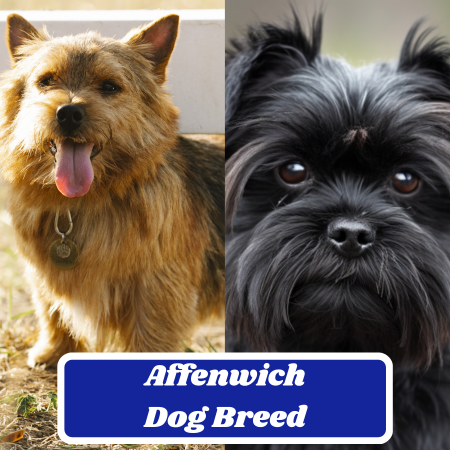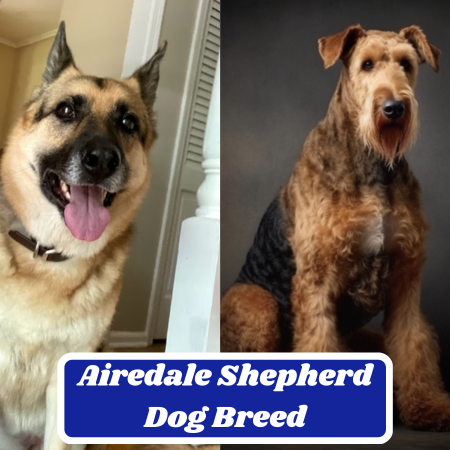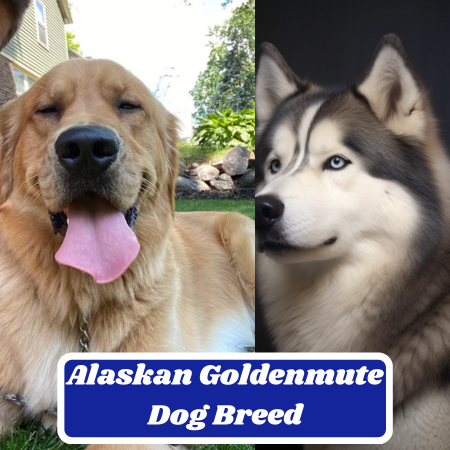Alaskan Malador Dog Breed: Characteristics, Information & Facts
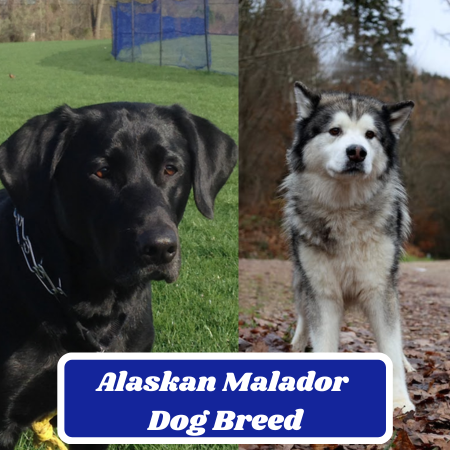
| Physical Characteristics | |
|---|---|
| Height (Male) | 24-26 inches |
| Height (Female) | 22-24 inches |
| Weight (Male) | 60-100 lbs |
| Weight (Female) | 50-85 lbs |
The Alaskan Malador Dog Breed: A Crossbreed of Two Amazing Breeds
Two of the most beloved dog breeds in the world are the Alaskan Malamute and Labrador Retriever. These two dog breeds have been around for quite some time and are very popular (Labs are the most common dog breed owned by people in the USA, and Alaskan Malamutes are also popular.) The Alaskan Malamute is from Alaska, while the Labrador Retriever is native to Newfoundland, Canada.
The Inuit people in Alaska traditionally used the Alaskan Malamute as a sled dog. This breed is known for its strength, endurance, and loyalty.
The Labrador Retriever was originally bred as a gun dog, and its main function was to retrieve the game during hunting expeditions. Labradors are highly intelligent dogs and are known for their friendly demeanor.
Why Were They Crossbred?
The crossbreeding of these two popular dog breeds resulted in what we now know as the Alaskan Malador. This breed has inherited some of the best qualities from both parent breeds, making it an ideal pet for many families.
One reason why these two breeds were crossbred is because they both have strong work ethics.
By combining these traits, it results in a breed that can handle challenging tasks but also has a calm demeanor when not working.
Another reason why they were crossbred is that they both have thick fur coats suitable for cold climates like those found in Alaska.
This new hybrid breed has quickly gained popularity among dog enthusiasts who want a loyal and energetic pet with unique personality traits inherited from two amazing breeds.
Appearance
Size and Weight Range
The Alaskan Malador is a large breed dog, with males typically weighing 75 to 100 pounds and females weighing 50 to 85 pounds.
They stand around 23 to 25 inches at the shoulder, making them formidable. This breed is larger than its Labrador Retriever parent but smaller than its Alaskan Malamute parent.
Coat Color and Texture
The Alaskan Malador’s coat comes in various colors, including black, gray, silver, cream, and chocolate. It may also have white markings on the face or chest.
The coat texture can vary as well; some dogs have a dense double coat like the Alaskan Malamute while others have a shorter coat more similar to the Labrador Retriever’s.
Physical Features Unique to the Breed
One unique physical feature of this breed is their large paws which are adapted for walking on snow and ice.
They also have muscular bodies with a deep chest that allows for endurance in colder climates. Their ears are medium-sized and triangular in shape, standing erect when alert but folding over when relaxed.
Additionally, their tails are thick and bushy like that of their Alaskan Malamute parent. Overall, the Alaskan Malador’s appearance is striking yet functional for their original purpose as working dogs in cold climates.
Temperament
| Temperament and Personality Traits | |
|---|---|
| Affectionate and loyal | ⭐️⭐️⭐️⭐️☆ |
| Playful and dignified | ⭐️⭐️⭐️⭐️☆ |
| Strong working drive | ⭐️⭐️⭐️⭐️☆ |
| Intelligent and agile | ⭐️⭐️⭐️⭐️☆ |
| Friendly and affectionate with family | ⭐️⭐️⭐️⭐️☆ |
| Can be stubborn and headstrong | ⭐️⭐️⭐️☆☆ |
| Responds well to positive affirmations and affection | ⭐️⭐️⭐️⭐️☆ |
Personality traits inherited from both parent breeds
The Alaskan Malamute and Labrador Retriever breeds have distinct personalities that have been passed down to their offspring, the Alaskan Malador. The Alaskan Malamute is known for its loyalty, intelligence and independence, while the Labrador Retriever is known for its playfulness, friendliness and eagerness to please.
These traits are present in varying degrees in the Alaskan Malador breed.
Alaskan Maladors are loyal dogs that always enjoy being with their family members.
They are intelligent dogs that learn quickly and can be trained to do a variety of tasks such as hunting, agility training or search and rescue operations. Due to their friendly nature inherited from the Labrador Retriever parent breed, they get along well with children and other pets.
Behavioral tendencies specific to the Alaskan Malador
Now both parent breeds were originally bred for working purposes, so it is not surprising that the Alaskan Malador has a lot of energy and needs regular exercise. This breed is best suited for an active household where they can be exercised daily through outdoor activities such as running or hiking.
Alaskan Maladors have strong personalities, requiring early socialization and training to help them become well-behaved adult dogs.
They can become stir-crazy if left alone for long periods of time or if they do not receive enough attention & exercise from their owners.
It’s worth noting that this breed has a strong prey drive due to its hunting instincts inherited from both parent breeds, which means they may chase after small animals like squirrels or groundhogs or other small animals during walks or runs. It’s just in their DNA.
As with any dog breed, proper training can help control and reduce this.
Health Issues
| Health Issues | |
|---|---|
| Heavy shedding breed | ⭐️⭐️⭐️⭐️☆ |
| A thick double coat that sheds heavily twice a year | ⭐️⭐️⭐️⭐️☆ |
| Bathing is required every few months to keep their coat and skin healthy. | ⭐️⭐️⭐️⭐️☆ |
| Nails will need to be trimmed regularly. | ⭐️⭐️⭐️⭐️☆ |
| Regular brushing is needed to prevent matting and tangling. | ⭐️⭐️⭐️⭐️☆ |
| Nails will need to be trimmed regularly | ⭐️⭐️⭐️☆☆ |
| Shedding is a natural process that cannot be prevented completely | ⭐️⭐️⭐️☆☆ |
Common Health Problems That May Affect the Breed
One of the most common health problems that affect Alaskan Maladors is hip dysplasia, a developmental disorder that affects the hip joint and can cause pain and discomfort.
This condition is hereditary and can be passed down from either parent breed.
Other conditions that may affect this breed include eye problems, such as cataracts, progressive retinal atrophy, and ear infections due to their floppy ears.
It’s important to be aware of these potential health issues so you can monitor your dog’s health closely.
Regular check-ups with a veterinarian are essential to prevent sickness and find potential medical conditions before they become more serious.
Additionally, it’s important to choose a reputable breeder who conducts health screenings on their breeding dogs to ensure they are not passing on any genetic diseases.
Prevention Measures and Recommended Health Screenings
While some health issues cannot be prevented entirely, there are measures you can take to reduce your Alaskan Malador’s risk of developing certain conditions.
Maintaining a healthy weight through proper diet and exercise is crucial for preventing joint-related problems like hip dysplasia.
It’s also important to attend regular veterinary appointments for check-ups and recommended vaccinations.
To detect potential health issues early on, it’s recommended to schedule routine health screenings for your dog.
This may include X-rays for hip dysplasia or eye exams for inherited eye diseases. Early detection often leads to better treatment options and outcomes.
As a responsible owner, it’s important to prioritize your Alaskan Malador’s well-being by giving them the proper exercise, training, food, and needs.
By monitoring their health proactively, you can help ensure they live long, happy lives free from preventable disease or discomfort.
Feeding
| Diet Needs | |
|---|---|
| Dry food should be 21% to 27% protein and 10% to 14% fat | ⭐️⭐️⭐️⭐️☆ |
| Canned foods are only about 12% protein | ⭐️⭐️☆☆☆ |
| Raw meat is a good supplement to their diet | ⭐️⭐️⭐️⭐️☆ |
| Adult Alaskan Malamutes should be fed between 3-5 cups of high-quality dog food per day | ⭐️⭐️⭐️⭐️☆ |
| Alaskan Malamute puppy needs around 1-2 cups of dog food in a day | ⭐️⭐️⭐️⭐️☆ |
When it comes to feeding an Alaskan Malamute, it’s important to remember that their diet needs to consist of dry food with a protein content between 21% and 27% and fat content between 10% and 14%.
Canned foods are not ideal, as they only contain around 12% protein.
For puppies, raw meat can be a helpful supplement to their diet.
The appropriate amount of high-quality dog food for an adult Malamute is between 3-5 cups per day, but this will vary depending on their size, weight, age, and activity level.
An Alaskan Malamute puppy should be given around 1-2 cups of dog food per day for proper growth.
Overall, the Alaskan Malamute’s diet needs have been rated 4 stars, with a focus on dry food with specific protein and fat content, raw meat as a supplement, and appropriate serving sizes for both adults and puppies.
Exercise Needs
| Training and Exercise Needs | |
|---|---|
| Daily exercise is necessary | ⭐️⭐️⭐️⭐️☆ |
| Exercise requirements are much higher than most similar breeds | ⭐️⭐️⭐️⭐️☆ |
| Require at least one to two hours of vigorous exercise per day | ⭐️⭐️⭐️⭐️☆ |
| Energetic and need plenty of exercise | ⭐️⭐️⭐️⭐️☆ |
Daily exercise requirements
Alaskan Maladors are a highly active and energetic breed that need daily exercise to stay healthy and happy.
Alaskan Maladors require at least 60 minutes of exercise daily to keep their bodies in good shape and to keep them stimulated.
They can become bored, destructive, and even overweight without enough exercise.
Remeber, the amount of exercise needed varies depending on the dog’s age, weight, and overall health. Younger dogs need plenty of exercise, while older dogs may need less.
Puppies and senior dogs may not be able to handle as much activity as young puppies or adult dogs. It’s important to discuss your dog’s specific needs with your veterinarian so you can create an appropriate exercise plan that will keep them healthy.
Activities that suit this breed’s energy levels
Alaskan Maladors enjoy a variety of activities that suit their high energy levels. They were originally bred for work in harsh outdoor conditions, so they thrive in activities like hiking, swimming, running, and playing fetch.
These types of exercises provide both physical and mental stimulation that keep them engaged.
Many Alaskan Malador owners also enjoy participating in dog sports like obedience training or agility courses with their pets. These types of activities challenge both the owner and the dog while providing an opportunity for bonding time.
It’s important to remember that Alaskan Maladors are unsuitable for apartment living or owners who cannot commit to spending significant time exercising them daily.
If you’re considering getting an Alaskan Malador, make sure you have the time to train, give them exercise and provide them with plenty of physical activity each day.
Training Requirements
| Training | |
|---|---|
| Alaskan Malador is typically easy to train and responsive to their dog parents | ⭐️⭐️⭐️⭐️☆ |
| Consistent and positive training is important | ⭐️⭐️⭐️⭐️☆ |
| Agility training is a perfect activity for an Alaskan Malamute | ⭐️⭐️⭐️⭐️☆ |
Recommended training methods for this intelligent breed
When it comes to training your Alaskan Malador, it’s important to take advantage of their intelligence and natural willingness to please.
Positive reinforcement training is great as well as rewards-based training work best for this breed.
Punishment-based training methods can have negative effects, causing the dog to become fearful or aggressive. Consistency is key when it comes to training an Alaskan Malador.
Ensure everyone in the household uses the same commands and techniques so your pup doesn’t get confused.
Start with basic traditional commands such as sit, stay, come, and lay down before moving on to more complex tricks like find it.
Tips for socializing your Alaskan Malador
Socializing your Alaskan Malador from a young age is crucial in helping them develop into a well-adjusted adult dog.
This breed is naturally friendly but can become aloof or shy if not exposed to different people, animals and situations at an early age. Puppy classes are a great way to introduce your dog to other puppies and people in a controlled environment.
Dog parks can also be a good option but keep in mind that not all dogs are friendly or well-behaved so make sure you are always keeping an eye on your pet’s interactions.
Introduce your puppy to different sounds like thunderstorms, vacuum cleaners and alarms so they don’t get scared later on.
As with training, consistency is key when socializing an Alaskan Malador.
Regular exposure will help them build confidence and learn how to interact with humans and animals.
Overall, Alaskan Maladors are intelligent dogs who thrive on positive reinforcement training methods.
Consistency in training techniques and socialization experiences will help them grow into well-adjusted adult dogs who enjoy interacting positively with others!
Grooming Needs
Recommended Grooming Routine for Their Thick Coat
Alaskan Maladors have a thick, double coat.
This coat provides the breed with insulation from cold and heat, but it also requires a bit more upkeep than other breeds’ coats.
Regular brushing at least once a week is necessary to remove tangles or mats and distribute natural oils that keep their fur healthy and shiny. It’s also important to note that this breed sheds quite a bit all year round, but especially during seasonal changes.
Daily brushing can help prevent excessive shedding around your home during these times.
It’s crucial not to shave or trim their coat too short because it can damage their fur’s insulating properties and cause discomfort in extreme weather conditions.
Bathing, Brushing, and Trimming Techniques
Bathing an Alaskan Malador should be done once every two months unless they get into something particularly dirty or smelly.
Over-bathing can strip natural oils from their skin, leading to dryness or irritation.
It’s important to use shampoo designed specifically for dogs and avoid getting soap in their eyes or ears. Brushing an Alaskan Malador is crucial for maintaining healthy skin and a shiny coat.
A slicker brush with long bristles helps remove loose fur without damaging the undercoat beneath it.
A metal comb can work out tangles gently without pulling too hard on sensitive areas like behind the ears.
When it comes time for trimming nails or hair around sensitive areas like paws, eyes, and ears- consider taking them to the groomer who has experience working with this specific breed.
Of course you may want to try some DIY dog grooming techniques if you have experience doing so with other pets – just be careful not to cut too close!
It’s always better to err on the side of caution than risk injuring your furry friend.
Living with an Alaskan Malador
Ideal Living Conditions for this Active Breed
Alaskan Maladors are a breed that requires plenty of space to run and play. This means that apartment living is not ideal, as they need room to stretch their legs and expend energy.
A house with a yard would be the perfect match for an Alaskan Malador.
It’s important to note that they are also social dogs, so it’s recommended that they have access to indoor living spaces to spend time with their family.
Another thing to consider when deciding on the best living conditions for your Alaskan Malador is the weather. These dogs were bred in Alaska, so they can handle colder temperatures well.
However, in hotter climates, it’s important to make sure they have access to shade and plenty of water. They have thick coats which can make them more susceptible to heat exhaustion.
Tips on Caring for Your Pet’s Physical and Emotional Needs
Alaskan Maladors are active dogs who require a lot of exercises to stay healthy and happy. Daily walks or runs are essential, but it’s important not to overdo it, especially when they’re still young or during hot weather conditions.
In addition, providing interesting toys or games can help keep them mentally stimulated. Another crucial aspect of caring for your Alaskan Malador is grooming.
Their thick fur requires regular brushing and grooming sessions to prevent matting and tangling. You may also need professional grooming services from time-to-time if you’re unable or don’t feel comfortable doing this yourself.
Emotional care is vital too! Providing your dog with love, attention and socialization will help ensure he/she remains emotionally healthy throughout their life span.
Remember these dogs crave human interaction which includes consistent training routines too! Building a strong bond through positive interactions will strengthen your relationship with your pup and keep them happy and loyal for years to come.
Conclusion
Summary of key points about the Alaskan Malador dog breed
The Alaskan Malador is a crossbreed between the Alaskan Malamute and Labrador Retriever breeds. This breed is known for its hardworking nature and intelligence, making it an excellent pet for those who enjoy outdoor activities. The Alaskan Malador is a large breed that requires daily exercise and mental stimulation.
Their thick coat needs regular grooming to prevent matting and tangles.
Their personality traits are inherited from both parent breeds, making them loyal, affectionate, and protective companions.
They are great with children and make excellent family pets because of their gentle nature.
However, they do have a strong prey drive due to their Labrador Retriever heritage, so early socialization is essential.
When it comes to health issues, the Alaskan Malador may be prone to hip dysplasia due to their large size. It’s important to provide proper nutrition and regular veterinary check-ups to ensure they stay healthy.
Final thoughts on why they make great pets
The Alaskan Malador is an exceptional breed that combines the best traits of both parent breeds. They are loyal, affectionate, intelligent, and protective companions that make great family pets.
If you’re someone who loves spending time outdoors with your furry friend or looking for an active companion to join you on adventures like hiking or camping trips- this could be the perfect breed for you!
They thrive in an environment with plenty of room to run freely but also love snuggling up with their owners after a long day of playtime outside.
The Alaskan Malador makes a great pet because it’s easygoing enough for families while still being capable enough for serious outdoor enthusiasts.
Overall, you won’t be disappointed if you consider adding an Alaskan Malador dog to your family.
They will bring joy, love, and companionship to your life in a way that only a loyal furry friend can.

